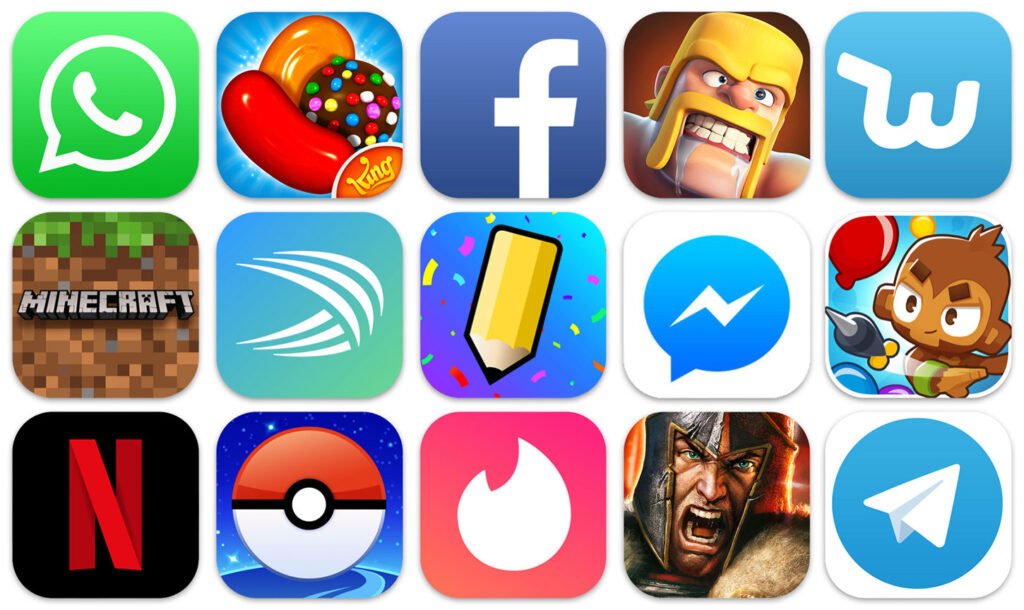The word “free” has a nice ring to it, and it can attract customers and app users effortlessly compared to other tactics. Mobile device usage has skyrocketed in the past few years, making it even more important to recognize how lucrative and helpful to customers a mobile app can be. However, some may be worried their targeted customers won’t be willing to purchase an app on top of their product. The most popular apps, Facebook, YouTube, Google Search, Pandora and more, are extremely successful AND free, so the question is… how do they make money?
We’ve listed a few ways you can make money off your app idea, and how your business can benefit from one.
-
- Advertising
This is simple, and yet the most profitable way of making money off a free app. This method requires you to work with other companies and agree to display either picture or video ads within your app. Because of its simplicity, this is the most popular strategy. 65% of all apps, and rising, on the market integrate advertising, according to a Sweet Pricing report, and 32.5% use advertising as their only source of revenue.
either picture or video ads within your app. Because of its simplicity, this is the most popular strategy. 65% of all apps, and rising, on the market integrate advertising, according to a Sweet Pricing report, and 32.5% use advertising as their only source of revenue.
As technology users, we’ve become aware of advertising in every part of our lives, and mobile apps are no different. This method provides a way for you to create relationships with other businesses. The important thing is to remember to work with other companies that make sense for your business and customers. They are unlikely to visit the site of a company if it doesn’t appeal to their generation, interests, etc. Additionally, if your advertising relationship doesn’t create profit for your partner company, they may be less likely to work with you again. Your customers are your number one concern, and working with businesses that will be of interest to them is the best way to make ads feel seamless and less distracting to the content of your own app.
2. In-App Purchases
 This strategy can be useful if your app offers other services that can give users a better experience or more access to the product your app delivers. Many game-centered apps use this method to allow users to unlock new levels and virtual currency, such as coins. Depending on the type of app, there are different types of purchases you can provide. Purchases that can be used immediately in the app, like virtual currency, or ones that don’t expire and are always available.
This strategy can be useful if your app offers other services that can give users a better experience or more access to the product your app delivers. Many game-centered apps use this method to allow users to unlock new levels and virtual currency, such as coins. Depending on the type of app, there are different types of purchases you can provide. Purchases that can be used immediately in the app, like virtual currency, or ones that don’t expire and are always available.
Another type of in-app purchase is subscription-based purchases, which involved the user accessing a premium feature for a limited time. If you’ve ever played a game on a mobile phone, you’ve most likely come across these.
For example, in the popular game Candy Crush, you can purchase extra lives, moves, and other items that can help you move up in levels. This has become extremely popular among dedicated players, and the popularity has remained steady over the past five years since the app was launched. It generates around $1.63 million in daily gross sales from just iPhone users in the United States, according to SeekingAlpha.com.
3. Subscriptions
Similar to the in-app purchase strategy, subscriptions similarly generated a large portion of the profit made by free apps. This strategy is largely used by  entertainment apps like video and audio streaming services like Spotify. Users can download the app for free but only have access to a limited amount of content or access to the content for a limited amount of time. In order for this tactic to be successful, developers should be sure they have continually updated content to ensure users maintain their subscriptions.
entertainment apps like video and audio streaming services like Spotify. Users can download the app for free but only have access to a limited amount of content or access to the content for a limited amount of time. In order for this tactic to be successful, developers should be sure they have continually updated content to ensure users maintain their subscriptions.
4. “Freemium” Model
The freemium model is something we’ve seen become increasingly more popular. Users can download an app for free, but they gain access to the premium version or extra content by purchasing it. This can be differentiated from
just implementing in-app purchases by the fact that users cannot play the full version of the game or access the full version of the app through the freemium model. Apps that only have in-app purchases usually provide users the full version and use those purchases to give the user the option of getting more coins or playing more than once a day. Freemium apps are usually more profitable than paid apps, but they also take time to build profit, according to thinkapps.com.
5. Crowdfunding
This method, growing in popularity, involves the help of the community that sees a need and want for your app idea and is referred to as crowdfunding. Through platforms like Kickstarter, Appsfunder, Indiegogo, and others, people can donate to the development of an app. However, it’s important to realize that these different platforms attract people with different motives. For example, if your app strives to make a difference in a societal issue or something similar, GoFundMe can be a successful platform.
You can also utilize equity crowdfunding, where investors are connected to entrepreneurs, and those who invest receive ownership of a small portion of the business. You can also crowdfund by giving those who donate early access to the app, sites like Kickstarter and Indiegogo focus on this approach.
By creating a free app and using these strategies, businesses can not only improve efficiency and customer experience but can also create new revenue streams in the process. Let us help with step one so you can focus on step two. Contact us HERE to get started!



